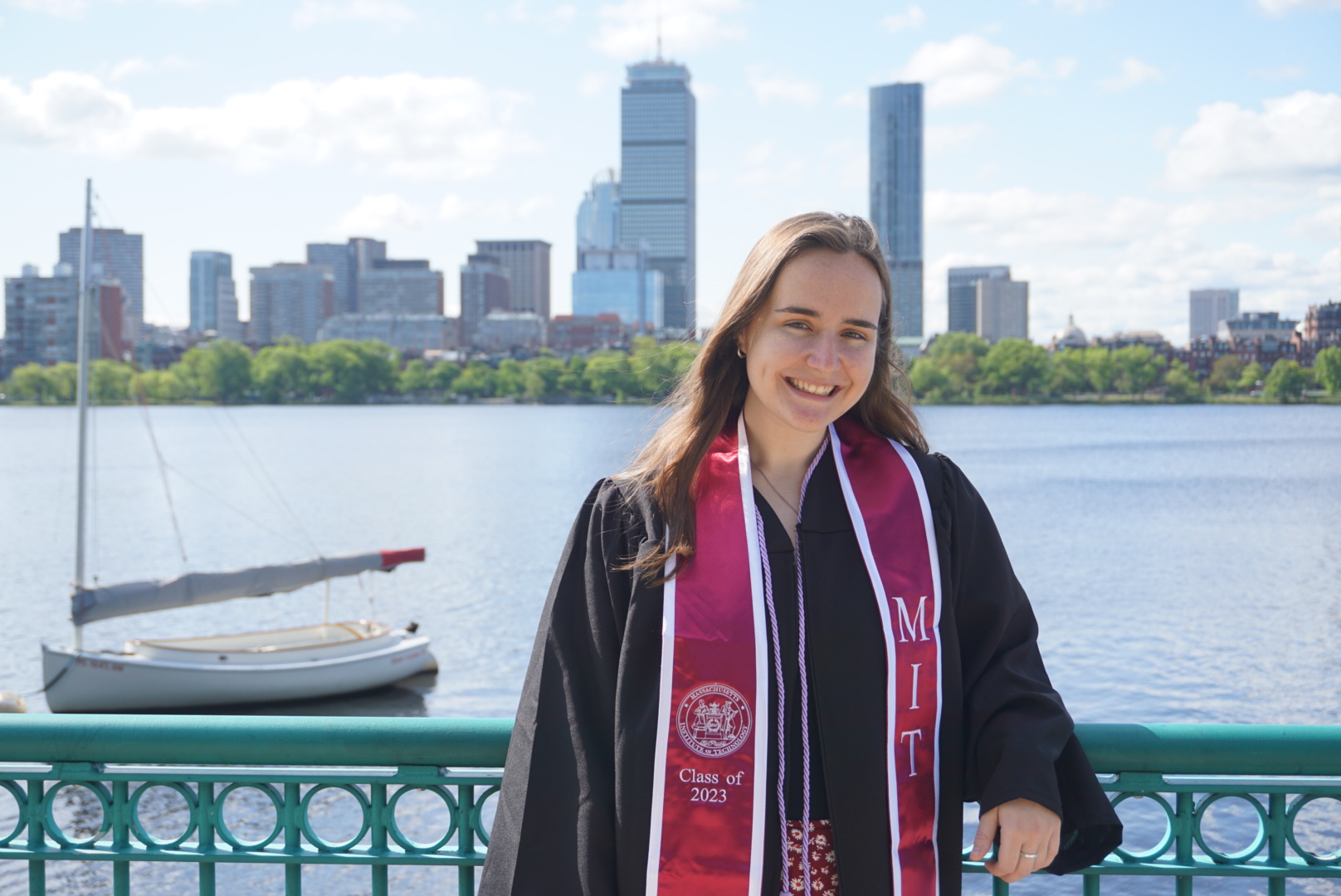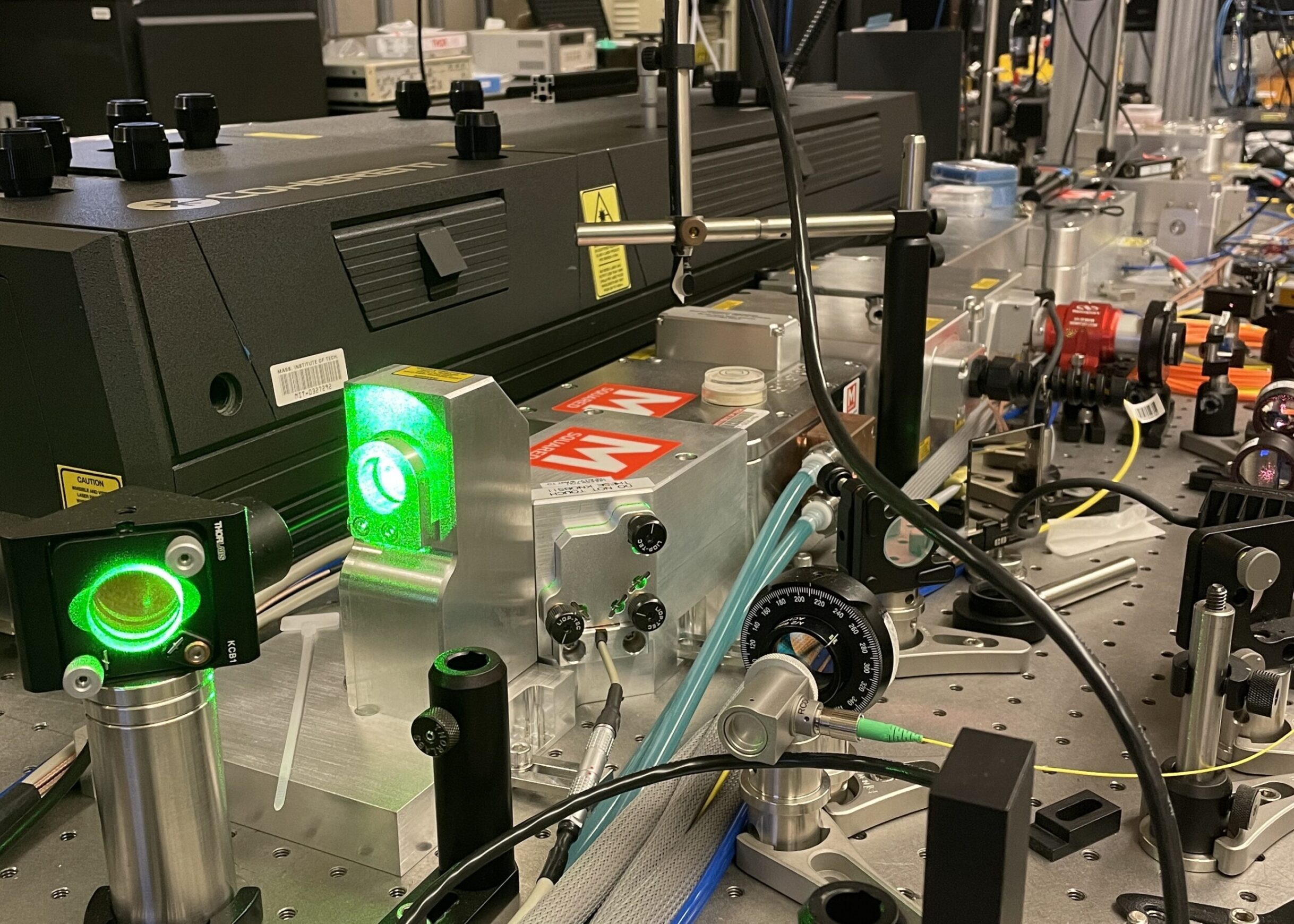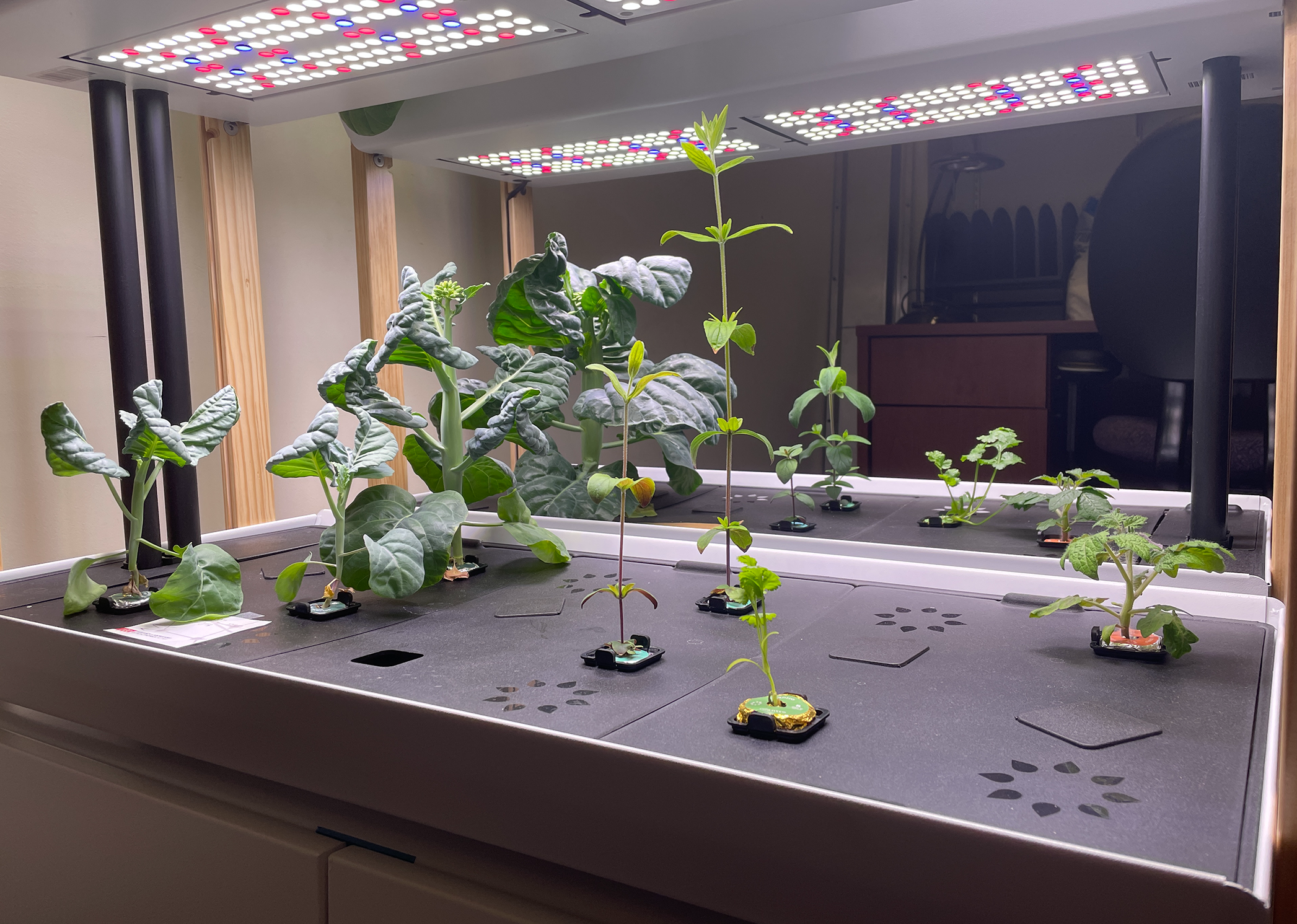Student Spotlight: Emerging Technologies to Address the Water Data Gap
September 27, 2023

Recent MIT graduate Dahlia Dry '23, expanded her research in water monitoring through the MCSC's Climate & Sustainability Scholars Program.
During her time at MIT, recent graduate Dahlia Dry ’23 completed the MCSC Climate & Sustainability Scholars Program, where she had the opportunity to conduct in-field water quality monitoring alongside MIT peers and faculty—motivated by the question: what’s in our water?
Dahlia’s research addresses the critical need to develop and scale up on-site monitoring technologies by engineering more advanced instrumentation in order to fill the water data gap. In her work for the Scholars Program, Dahlia worked to articulate the advantages of using optical measurement techniques, specifically Raman spectroscopy (a non-destructive chemical analysis technique), to collect water data. This research was a continuation of her previous work with MIT’s Rajeev Ram, Professor of Electrical Engineering, and Nili Persits, a graduate student in Professor Ram’s group at the Research Lab of Electronics at MIT, to develop a field-deployable implementation of Raman spectroscopy, a non-destructive chemical analysis technique.
In her presentation for the Scholars Program, Dahlia expands on her research and hopes to shares her knowledge with a wide audience.
When it comes to the research you've worked on so far at MIT, what are you most proud of?
In the two years that I’ve been involved in my research at MIT’s Research Lab of Electronics (RLE), I’ve found incredible mentorship and received ample support and encouragement from my grad student supervisor and my PI to delve into a research project that feels like the perfect marriage of my technical interests and my drive to do work that has the potential to make a substantive, immediate impact. I’ve been able to not only obtain valuable experience with optical engineering, but also use my presence to steer the targeted applications of our novel system for networked swept source Raman spectroscopy (of which there are many) towards the sustainability space. It’s something I’m quite grateful for and which feels very meaningful in terms of my development as a researcher.
That kind of tangible connection between the work that I do and real-world impacts is of the utmost importance to me, and it's the compass that I plan to use to guide my search for what comes next after college.
Describe what makes your research innovative.
The key innovation of our approach is that, by using a tunable source laser, we do spectroscopy without the spectrometer. In doing this, we are able to achieve a much higher signal to noise ratio using hundreds of times less laser power, thereby cutting the cost of doing Raman spectroscopy (which is currently quite prohibitive) and reducing the bulk of the apparatus substantially, making it possible to liberate this measurement technique from the lab setting on an industrial scale. I’m motivated by visions of the myriad of ways in which this device could be employed to fill critical data gaps. I see it being used to track chlorophyll levels as an indicator of mangrove health in the fragile estuarine ecosystems that filled my childhood; I see it empowering regulators to better hold polluters accountable by enhancing oversight capacity of microplastic and per- and polyfluoroalkyl substances (PFAS) contamination in waterways; and I see it helping farmers prevent overfertilization and resource waste by enabling precise measurement of nutrient levels in their water and even directly in the leaves of their plants.

Snapshot of one of the optics benches with a laser the team uses for their Raman measurements at RLE

Plants growing in the hydroponic system whose nitrogen uptake they monitor with their novel swept source Raman architecture
What is your favorite aspect of the research process?
I love the way the struggle feels worth it when things finally click. It takes a lot of patience and perseverance, but it’s all in service of that eventual moment when everything settles into place, and I find that very motivating. For me personally, I thrive when I get to work at the interface between software and hardware, which I was able to do through my MCSC-related research. I can spend a day in the optics lab tinkering with a laser and then when I’m sick of that I can go grab a coffee and write some code to make the laser perform, and that way I don’t get too burnt out on any one thing. I love thinking about the best way to connect a bunch of disparate components so that the composite system functions elegantly, as more than just the sum of its parts.
What did you gain from the MCSC Scholars Program?
So much! Bonding with like-minded peers I never would have gotten to meet in classes within my major, asking tough questions of industry representatives on the efficacy of their sustainability strategies, hearing lectures from professors across the institute working on climate change from an eye-openingly diverse range of fields. The dedication and level of care for students from the teaching staff was truly unparalleled. And as someone with two majors that I once thought weren’t really relevant to climate and sustainability work, I can promise if you think the same, you’ll be proven wrong.
This was easily one of the best classes I took throughout my time at MIT and I can’t recommend it enough to any student who thinks they might be interested in building a career in the climate space.
What unique perspective do you bring to climate and sustainability research?
I think the most useful thing I’ve gotten from my physics education is the ability to see underlying symmetries between things that seem very different on the surface. And when it comes to making sense of the infinite complexities of the systems involved in the climate and sustainability realm, I think that’s a really valuable skill to have. I first came to MIT to be an astrophysicist. I wrote rather whimsically in my application that I “had seen the stars and hadn’t looked down since”, but as time passed the whisper of urgency that climate change had always stirred in me became amplified to a constant, dull roar.
As a result, the work I’ve done has really been all over the place; I lived in Chile for a summer and co-authored a paper on active galactic nuclei, I worked on a congressional campaign in Texas and did data analytics for the Sunrise Movement, and now here I am fiddling with lasers and counting photons at RLE. My resumé looks jumbled at first glance, but there’s more connections between those very disparate experiences than meets the eye. While they do vastly different things, the underlying physics of a radio telescope listening for interstellar gas in the Chilean desert and a bulky spectrometer analyzing water samples in an optics lab are elegantly similar.
What are your next steps for the future?
I will be moving to Copenhagen to work on embedded systems engineering at a small startup called TEGnology, which creates battery-alternative devices that convert heat from industrial processes into electricity. Similar to the research I’ve done at MIT, I feel that these devices have the potential to fill data gaps that are imperative to our ability to build the efficient and sustainable systems that will make the future livable for us all. As I attempt to chart a course beyond graduation, I’m navigating by my desire to find work that melds my enthusiasm for building tools to help explore our world with my passion for working (and playing) in and around earth’s many indispensable aquatic realms.
